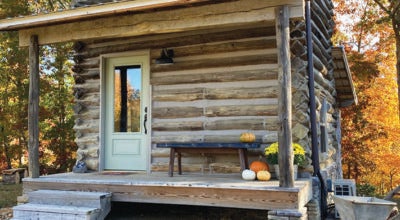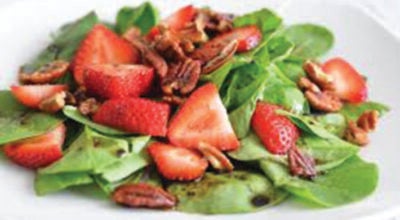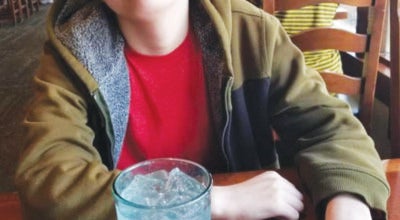The Literary Corner: Renegade Writer’s Guild
Published 10:35 am Thursday, July 21, 2022
|
Getting your Trinity Audio player ready...
|
Kindness
By Julie Terry Cartner
We were poor. Not the kind of poor that necessitates sleeping in a car and foraging for food, but the kind of poor where nothing is wasted. Clothes passed down from one child to the next, regardless of gender, shoes were worn until they sprouted holes, gardening was a necessary chore and canning and freezing were a must, and all leftovers were eaten. Waste not, want not was a family adage.
So, for us to go on a vacation, even a day trip, was a rare occurrence. But one day, when the desire to broaden our educations overrode normal frugality, Mom and Dad took us to a Seminole Village in the Florida Everglades. I was young, not more than five or six, so my memories are sketchy, but I do remember the events that had the biggest impact on me.
We watched a man wrestle a crocodile, or was it an alligator? Either way, I was fascinated and terrified. I just knew the man was going to lose an arm or his head when he placed both in the animal’s mouth. But, even though the wrestling was an event that caused my heart to pound, that is not what I remember with the most clarity.
I love animals of all kinds, and monkeys really fascinated me. They were so quick, so agile, and so smart. In this village there were monkeys chained to trees. The chains were long enough to let the monkeys climb up and down and run around the yard. Dad bought us hot dogs for lunch, and, as I was eating mine, I walked closer and closer to the monkeys. Mom told me not to get too close, but truthfully, it was, and still is, almost impossible to keep me away from any animal.
As I took a bite of my hot dog, apparently, I took one step too close. In a flash, a monkey scampered down a branch near me, reached out and grabbed my hot dog right out of the bun, then retreated swiftly to a perch well above my short stature. Chattering down at me as if to say thanks, he ate the hot dog with the greatest of enjoyment.
Now, you might think that was the story that made such an impact on me, but that’s not the case. I was torn between laughing at the antics of the monkey or crying at the loss of my hot dog. Instinctively, I knew Dad couldn’t afford to buy me another one, so I was about to eat the bun sans hot dog. A man, who had seen the whole thing happen, gently took the bun from me, went to the concession stand and bought me another hot dog. Explaining to me that the bun might not be clean from the monkey’s paws and a fresh hot dog would be safer for me to eat, he accepted my thank you, smiled, and suggested I might want to stay back out of the monkey’s reach. Then he left, not wanting to make a big deal out of the whole exchange.
Kindness. It’s such a wonderful trait. And kindness with no expectation of a reward, even more so. Whoever that man was, I’m sure he had no idea of the impact he had on my life, so much so, that over fifty years later, I still remember the incident. The thing about kindness is that it doesn’t have to cost anything and often takes just a little bit of time. Compliment someone on his or her appearance, help load someone’s groceries, take fresh vegetables to someone who doesn’t have a garden, or offer to take a cart back to the stand. It really doesn’t matter. The exact action may be forgotten, but the act of kindness can last a lifetime.
Discrepancies
By Marie Craig
My great grandfather, Thomas “Tommy” Jasper Richardson, had six brothers and two sisters. They lived in Sheffield, Davie County. His father and a brother served in the Civil War, and a recently discovered obituary in the Charlotte paper said that Thomas was a Captain in the Civil War. This is the only mention I’ve found of him serving. He was born in 1846, so he would have been only 15 when the war began. The obituary had the location of Cooleemee for his residence, so I’m doubting the validity of his serving. It’s hard to believe that someone that young could have become a captain.
I want to know more about his siblings and have attempted to study them. Tommy had a younger brother, Joseph Columbus “Joel” Richardson, who was a Methodist minister. Most of my family were farmers, so it was interesting to study a different vocation. My mother had said, “Uncle Joel was a preacher.”
When I looked for Joel on FindAGrave.com, I found two pages for him. One said that he was buried in Mountain View Cemetery in Rutherford College, North Carolina. The other page listed him as being buried at Oakwood Cemetery in Statesville.
I learned long ago that errors are common and will lead to confusion and much research to determine which answer is correct. The page with photos of his tombstone at Oakwood led me to believe that this is the correct answer. I looked for an online site with listings of burials at Oakwood but did not find one. I found an email address for the person in Statesville government in charge of their cemeteries, and she wrote me back quickly that he and his wife are both buried at Oakwood. She told me that their daughter, Lizzie, bought four cemetery plots and that he was buried 11 December 1935. I found his death certificate stating that he died in Rutherford College on 12 December 1934. I contacted a Methodist museum, and I was emailed 3 pages of a biography written about him. This gave the same death date and that he was buried at Mountain View.
Evidently, he was buried at Mountain View and a year later moved to Oakwood. There is a vertical monument that says only “Richardson” on both sides. There are two flat monuments that have the couple’s names and dates. His has four lines: Rev. J.C. Richardson/ Dec. 5, 1858/ Dec. 12, 1935/ Age 76 Yrs. 7 Das. OK, math students, find the errors. First of all the death year is wrong. When he died, he had already had his birthday that year, so you can subtract to see how old he was. 1935 minus 1858 is 77, not 76. It seems that the foot stone had the date he was buried a year later instead of his actual death date.
Another confusing fact is that his wife “Belle” has multiple spellings of her full name. Her tombstone says “Senath Isabel Richardson/ Feb. 17, 1858/ Nov. 12, 1944” which agrees with her death certificate. I found her name spelled Acenith, Cenith, and Senath. Her maiden name was Ward, and her parents were from England.
I found their daughter Lizzie Ann on FindAGrave and linked to them. Someone had put notes that she was never married. However, I found that when she was 16 that she married in Harmony to a man who was 22. Her parents were listed as writing a letter of consent for her marriage at 16. Another minister married them; not her father, but he was listed as witness. They are listed as husband and wife on the 1910 US Census in Davidson County. He is a woodworker. But in 1920, he is married to someone else, living in Virginia with two little daughters. In the 1930 and 1940 census, Lizzie is back home with her parents with surname of Richardson. In the 1950 census, she is a patient at Broughton Hospital in Morgantown. Her death certificate lists her birthday year as 1877, but she was actually born in 1887. FindAGrave says that she is buried next to her parents at Oakwood, but there is no marker. I visited there this week. Luckily I had the section number to narrow down the search at that huge cemetery. I can see blank space where she is probably located. Her parents were both deceased when she died, and there was probably no one and no money to put a marker.
This was a confusing, full-of-mistakes search. The positive parts are the wonderful tributes to Joel in his biography. He went to Davie schools and then taught five years. Then he started his religious study at Fairview College which was located at Traphill, North Carolina, and later the school relocated to Washington, North Carolina, and renamed Collegiate Institute. After graduation, he served churches in Traphill, Davie County, Chandler, Yadkin, Green River, Thermal City, Thomasville, Rosman, and Rutherford College. He was a minister for 40 years. The tribute was written in 1934 and had high praise for his ministry and personal life.
Photo Memories
By Gaye Hoots
Cammie gave me a small packet of pictures that had belonged to her father. The first three were of Norman Spry, one of him standing loose-limbed, arms at his side in the front yard of the home where he grew up. Another is of Norman and James Lester Tucker sitting in a swing on the front porch, and the third is of Norman with his back to the camera, wearing a black shirt with Shady Grove Motorcycle Club Advance N.C. written on the back of his shirt.
Roy had a picture of himself wearing a similar shirt with a motorcycle cap, a scarf around his neck, and a large motorcycle belt buckle along with black boots. He was standing proudly in front of a black motorcycle. I have only a vague memory of the motorcycles, but many stories associated with them. The Potts’ boys and Harvey Zimmerman had motorcycles, as did others.
A picture can trigger many memories. Bob and Norman Spry worked for my dad on the farms, helping get up hay and doing other farm chores. Brenda Spry and I started first grade together, and Doug was just ahead of us in school. I remember him cutting up on the bus rides to high school.
My memories of Mildred, the older sister, are more recent. The Spry homeplace joined the home my mother was living in when she had a stroke. Mildred had traveled with Betty Potts, Doug’s widow, and they were friends of Mom. When Mom’s health started declining, Mildred would call her every morning to see how she was feeling; she also cooked meals for Mom and would bring them to the window of her bedroom and pass them in through the window, so Mom didn’t have to carry them through the house. Mildred was the one who alerted Faye that Mom was not answering her phone when she had her stroke.
When Betty Potts was in a long-term care facility, I often took Mildred to visit her, and Mildred invited me to eat at times. The last time she asked me, she was so weak she had to call Doug to finish cooking the meal for us. Currently, I was living in the Hartman house and Brenda and Kenny Burton were near neighbors. Kenny had been a friend of Roy’s for many years.
Mildred told me the story of Brenda’s birth; it was a home birth. Mildred was grown and working at a furniture plant in Lexington, but for some reason, the plant had to send the workers back home that day. Mrs. Grace Spry had a fire going under the wash pot when Mildred got home, and Mildred helped her hang the clothes on an outside line. When they finished, Mrs. Grace told her the baby was coming and asked Mildred to get her dad while Mrs. Grace got a bath. When Mildred returned home her dad went to fetch the doctor, and when he arrived, Mildred took the other children that were home down to a tobacco barn and kept them there until the baby, Brenda, was born. Hard to imagine the conditions women lived with then.
The picture of James Lester Tucker reminded me that he had also worked for my dad, and Daddy must have liked him because when James was in jail for some minor offense, Daddy took me with him to visit. The visitation was in the yard inside a fence, possibly in Salisbury. Those with visitors sat with them around picnic tables in the yard. I had never seen anything like this before, so it made an impression.
The other photos in the pack were of Roy’s graduating senior class at Shady Grove School. Four generations of our family have attended since then. I will do another article on the other photos.





